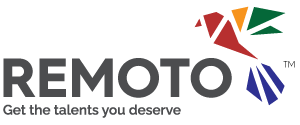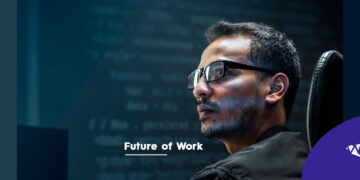In recent years, remote work has shifted from a niche privilege to a mainstream mode of employment. Amidst the backdrop of technological advancements and global challenges, remote work is no longer an exception but a burgeoning norm in the modern workforce.
Comprehending the trajectory of remote work is crucial. It equips businesses and employees alike to adapt, innovate, and remain competitive in an ever-evolving work environment.
This post aims to provide a comprehensive analysis of remote work’s evolution, current trends, and future predictions, offering insights for both employers and employees to thrive in this new era.
A Journey Through Time: Remote Work’s Roots
The historical context and evolution of remote work provide a fascinating lens through which we can understand its current state and future potential. Remote work’s roots extend back to the late 20th century, marking a period where the concept began to take shape.
During these formative years, it was the advancements in technology that gradually paved the way for what we now recognize as telecommuting and flexible work arrangements. This period signified the first steps towards a work culture that wasn’t bound by the physical confines of an office.
As we progressed through the last few decades, a series of significant technological milestones played a critical role in shaping remote work into what it is today. The advent of the internet was a game-changer, opening up a world of possibilities for communication and information sharing.
This was further enhanced by the development and widespread adoption of mobile technology. Smartphones and laptops allowed work to be done virtually anywhere, breaking down the traditional barriers of a 9-to-5 office job.
These technological leaps made remote work not only more accessible but also more efficient, enabling a seamless transition from the office to the home or any other remote location. This evolution has been crucial in laying the groundwork for the diverse and flexible work environments we see emerging today.
Current Trends in Remote Work
The landscape of remote work is currently characterized by several key trends that reflect its growing influence across various sectors and the challenges it brings. One of the most prominent trends is the surge in remote work’s popularity across diverse industries.
It’s no longer confined to the tech sector; fields like education, healthcare, and even government are now embracing the flexibility and potential for increased productivity that remote work offers. This widespread adoption signifies a fundamental shift in the way organizations operate and how employees fulfill their roles.
Central to the functioning of remote work are the technological innovations that support it. Tools such as cloud computing and various collaborative platforms have become indispensable in this new work environment. They provide the backbone for remote work by enabling seamless connectivity and efficient workflow management, regardless of physical location.
These technologies have not only facilitated the practical aspects of working remotely but have also enhanced the overall experience, making it more viable and appealing.
Alongside these technological advancements, there’s a noticeable shift in mindsets within the workplace. Both employees and employers are increasingly valuing flexibility, work-life balance, and employee autonomy. This change in attitude is reshaping workplace cultures around the globe, placing a greater emphasis on outcomes rather than traditional office hours and locations.
However, the transition to remote work is not without its challenges. Issues such as feelings of isolation, difficulties in communication, and the risk of burnout are becoming more prevalent. These challenges highlight the need for well-thought-out remote work policies and practices.
Companies are now tasked with finding a balance between leveraging the benefits of remote work and addressing its potential downsides. This balance is key to ensuring that the shift to remote work is sustainable and beneficial for both employers and employees in the long term.
Do you want to learn more about remote work? Check this TED Talk!
Predictions for the Future of Remote Work
As we look towards the future of remote work, several predictions stand out, highlighting an unstoppable trend and the influence of technological advancements. Foremost among these is the anticipated continued growth in remote work.
More companies are expected to adopt either a hybrid model, blending in-office and remote work, or switch to a fully remote model. This shift indicates a fundamental change in organizational structures and work cultures, acknowledging the benefits and viability of remote work in a variety of sectors.
Technological innovation is set to play a pivotal role in this evolution. Emerging technologies such as Artificial Intelligence (AI) and Virtual Reality (VR) are at the forefront of redefining the remote work experience.
AI is poised to streamline workflow and automate routine tasks, while VR promises to offer more immersive and interactive ways of working remotely. These technologies are not just enhancing efficiency but are also creating more engaging and collaborative work environments, regardless of physical location.
The design of workspaces is another area undergoing significant transformation. As remote work becomes more prevalent, both home and office spaces are being rethought to better accommodate this new way of working.
The focus is on creating spaces that are ergonomic and functional, conducive to productivity, and supportive of prolonged remote working scenarios. This shift in workspace design reflects a deeper understanding of the importance of a well-structured work environment for remote employees.
The evolution of communication and collaboration tools is another critical aspect of the future of remote work. Future tools are expected to be more integrated and intuitive, effectively bridging the gap between physical and virtual workspaces. These tools will likely facilitate smoother collaboration and communication among remote teams, replicating the in-person interaction experience as closely as possible.
Lastly, environmental considerations are becoming increasingly relevant in the discourse around remote work. The potential for remote work to positively impact the environment is significant, particularly in reducing commuting and office-related carbon footprints.
This environmental angle adds another layer of benefit to the remote work model, aligning it with broader sustainability goals and practices. As we advance, these predictions paint a picture of a remote work landscape that is dynamic, technologically advanced, and increasingly aligned with both individual and environmental well-being.
Takeaway
In conclusion, the journey of remote work from a novel concept to a mainstream employment mode illustrates a profound shift in the global work landscape.
The evolution of remote work, driven by technological advancements and changing mindsets, has ushered in a new era of flexibility, efficiency, and productivity. As we’ve explored, the current trends in remote work, from its widespread adoption across various sectors to the indispensable role of technology, highlight a transformative period in how we view and approach work.
The future of remote work, as predicted, is marked by continuous growth and significant technological innovations. Emerging technologies like AI and VR are set to redefine the remote work experience, making it more immersive and efficient. The redesigning of workspaces and the evolution of communication tools are also critical components in this future landscape, ensuring that remote work is both practical and sustainable.
Furthermore, the environmental implications of remote work cannot be overlooked. As organizations and individuals increasingly recognize the potential environmental benefits of remote work, it becomes not just a matter of convenience or productivity, but also a part of larger sustainability efforts.
Ultimately, the future of remote work is dynamic and promising, presenting opportunities for greater work-life balance, productivity, and global collaboration. As we embrace these changes, it’s clear that remote work is not just a passing trend, but a fundamental aspect of our evolving work culture, offering a glimpse into the future of the global workforce.














